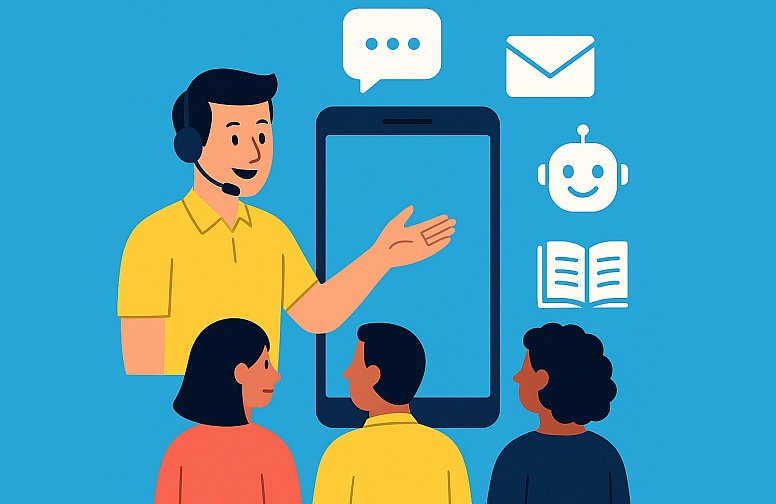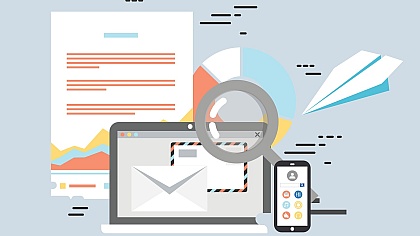
Customer Support: Functions, Strategies & Best Practices
What is customer support?
Simply put, customer support is a specialised service that helps customers effectively use a company’s products or services. It often focuses on technical assistance and problem resolution, ensuring a seamless user experience and addressing product-related concerns. Although the term is largely associated with technology and SaaS companies, customer support is relevant in every industry where user satisfaction is critical to business growth.
Customer support professionals are more than just problem-solvers—they are brand representatives who embody a company's values. They need a strong understanding of the product, combined with empathy, patience, and the ability to communicate complex solutions clearly and concisely.
Common customer support responsibilities
a. Onboarding assistance
Onboarding is the process of guiding new users to understand and efficiently use your product. It's a key driver of long-term retention and satisfaction.
Customer support agents assist with:
- Welcome emails and getting started guides
- Tutorial videos
- Live walkthroughs
- First login guidance
- Data import and system configuration
A smooth onboarding experience ensures that users can unlock the full value of the product quickly, minimising early frustration.
b. Troubleshooting
Technical issues are bound to arise. Troubleshooting is where customer support shines, diagnosing and resolving user problems effectively.
Key skills required include:
- Analytical thinking
- Patience and active listening
- Clear communication
- Quick and accurate identification of issues
Support teams need both technical expertise and interpersonal skills to turn a potentially negative experience into a positive one. The use of AI in customer service is increasingly important here, helping teams automate diagnostics and recommend quick solutions to repetitive issues.
c. Maintenance and upgrades
Timely updates and maintenance keep products secure, reliable, and aligned with customer needs. Support teams assist in:
Scheduling software upgrades
- Providing patch notes
- Guiding users through updates
- Resolving compatibility issues
Ensuring customers are up-to-date with product developments enhances performance and trust in your brand.
d. Gathering and sharing feedback
Support teams are on the front lines of customer interaction, making them invaluable for collecting feedback. Sharing this feedback with product, marketing, and leadership teams helps:
- Improve product features
- Shape marketing strategies
- Refine user experience
- Common feedback collection tools include:
- Surveys and polls
- Post-interaction forms
- Social media listening
- Chat transcripts
Types of customer support
A strong support system uses various approaches to cater to different user preferences and needs:
a. Self-support
Self-service empowers users to resolve issues independently using:
- FAQs
- Knowledge base articles
- How-to videos
- Community forums
Self-support reduces ticket volume and increases customer satisfaction by providing instant answers.
b. Anticipatory support (proactive support)
This involves predicting and addressing customer issues before they arise.
Methods include:
- Automated onboarding emails
- Proactive alerts about outages or changes
- Preemptive education on commonly misunderstood features
Anticipatory support reduces the volume of inbound requests and shows customers that you value their time, a proactive stance that aligns with strong customer experience management strategies.
c. Responsive support (reactive support)
This traditional form of support kicks in when users reach out with a problem.
Channels include:
- Phone calls
- Emails
- Live chat
- Social media
While essential, businesses should strive to reduce reliance on reactive support by improving product usability and embracing proactive service.
Best practices for delivering excellent customer service

To provide world-class customer support, companies must go beyond technical problem-solving. Here's how:
1. Be present on customers’ preferred channels
Modern consumers expect omnichannel support, whether through:
- Phone
- Live chat
- Messaging apps
- Social media platforms
Seamlessly switching between these channels improves response speed and customer experience.
2. Show empathy in every interaction
Empathy transforms customer support from transactional to emotional. Agents must:
- Put themselves in the customer’s shoes.
- Listen without interruption
- Validate concerns
- Offer personalised solutions
3. Embrace a customer-centric culture
Being customer-centric means making the customer the heart of every decision. That includes:
- Hiring staff who care about customer success
- Listening to feedback and acting on it
- Breaking down silos between departments
- Viewing support as a long-term relationship
4. Be proactively helpful
Proactive service can preempt issues, turning support into a revenue generator.
5. Personalise every interaction
Customers want to be recognised and remembered.
Use tools to:
- Reference past purchases
- Acknowledge user preferences
- Avoid repeating questions already answered.
6. Respond quickly
Speed is essential. Most customers expect:
- A phone response within 5 minutes
- Live chat replies within 2 minutes.
- Email responses within 24 hours or less
Offer AI-powered chatbots, clear SLAs (Service Level Agreements), and automated responses to reduce wait times and improve customer satisfaction.
Customer support encompasses so much more than a helpline—it’s the heartbeat of the entire relationship between an organisation and any of its customers. Whether through providing technical help, facilitating user onboarding, quickly resolving complications, or gaining valuable data, support teams represent a critical element of customer satisfaction, retention, and brand loyalty.
No matter if it is by providing proactive communication, self-service options, or responsive care, top-of-the-line customer support is built on empathy and efficiency as well as a customer-first approach. In today’s crowded marketplace, all businesses that invest in quality customer support will not only solve problems—they will build trust, establish loyalty, improve experiences, and equip themselves with considerable advantages for future success.














